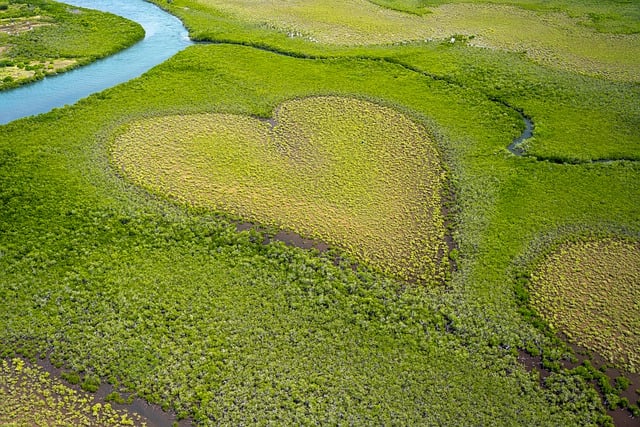Every year on April 22, Earth Day is observed, symbolizing a turning point in environmental activism and awareness around the globe. Senator Gaylord Nelson of Wisconsin came up with the concept for Earth Day because he was extremely worried about the state of the environment in the country in the 1960s of Echoes of Nature: Resounding Commitment on Earth Day.
On April 22, 1970, the country celebrated its first Earth Day, which attracted an estimated 20 million participants from various backgrounds to take part in demonstrations, teach-ins, and cleanup efforts across the country. This historic occasion sparked a renewed awareness of environmental issues, which resulted in the creation of the Environmental Protection Agency (EPA) and the passing of important environmental laws, such as the Endangered Species Act, the Clean Water Act, and the Clean Air Act. laws, such as the Endangered Species Act, the Clean Water Act, and the Clean Air Act.
Over the decades, Earth Day has developed right into a worldwide phenomenon, with over a hundred ninety nations now collaborating in coordinated sports to sell environmental sustainability and cope with urgent ecological demanding situations which include weather change, deforestation, pollution, and lack of biodiversity. Each year, Earth Day serves as a rallying cry for individuals, communities, businesses, and governments to take significant movement toward a greater sustainable and resilient destiny for our planet.
Long-term changes in the patterns of the earth’s weather, mostly brought about by human activity such the burning of fossil fuels, deforestation, and industrial processes, are referred to as climate change. The effects of climate change are extensive and profound, having an impact on economies, cultures, and ecosystems globally.

Climate Change’s Effects:
Global temperatures have been rising significantly, which has increased the frequency and intensity of heatwaves, wildfires, and droughts. Public health, water resources, and agriculture are all negatively impacted by this.
Melting Ice Caps and Increasing Sea Levels: As a result of sea level rise brought on by the melting of polar ice caps and glaciers, coastal towns are at greater risk of floods, erosion, and saltwater intrusion.
Extreme Weather Events: Hurricanes, cyclones, floods, and storms, which destroy houses, infrastructure, and means of subsistence, are becoming more common and severe due to climate change.
Ecosystem disruption: Variations in temperature and precipitation cause ecosystems to become unstable, which can result in the loss of habitat, the extinction of species, and changes in the migratory patterns of wildlife.
Responses to Climate Change:
Accelerating the switch from fossil fuels to renewable energy sources, such hydroelectric, solar, and wind power, will help to mitigate climate change and cut greenhouse gas emissions.
Energy Efficiency: Reducing energy consumption and carbon emissions can be achieved through improving energy efficiency in industrial operations, buildings, and transportation.
Reforestation and afforestation: Adding trees to the landscape and repairing damaged ecosystems contribute to biodiversity enhancement and carbon dioxide sequestration from the atmosphere.
Sustainable Agriculture: Using techniques like conservation tillage, agroforestry, and organic farming can improve soil carbon sequestration and lower agricultural emissions.
Carbon Pricing: By putting in place carbon pricing mechanisms like carbon taxes or cap-and-trade programs, financial incentives are created for lowering emissions and making investments in low-carbon technology.
Adaptation Strategies: Communities can better prepare for disasters, manage water resources more effectively, and build robust infrastructure as examples of adaptation strategies that can be developed and put into practice.
International Cooperation: In order to take worldwide collective action to combat climate change, it is imperative to strengthen international cooperation and accords, such as the Paris Agreement.
We can lessen the effects of climate change and create a more resilient and sustainable future for present and future generations by putting these and other solutions into practice.

The Function of Renewable Energy Technologies in Environmental Preservation
Utilizing renewable energy sources, such as sunshine, wind, water, and geothermal heat, renewable energy technologies produce heat and power without consuming limited resources or releasing harmful pollutants into the atmosphere. By lowering greenhouse gas emissions, air and water pollution, and reliance on fossil fuels, these technologies are essential for environmental conservation. The environmental advantages of the following major renewable energy systems are listed:
Solar Power:
Solar thermal systems use sunlight to heat water or air for space heating or power generation, whereas solar photovoltaic (PV) panels use sunlight to convert sunlight directly into energy.
Solar energy is a clean, sustainable energy source since it is widely available, abundant, and produces no greenhouse emissions when in use.
We can lessen our dependency on fossil fuels, slow down global warming, and enhance air quality by using solar energy.
Hydroelectricity
Using turbines attached to generators, hydropower harnesses the kinetic energy of flowing water, usually from rivers or dams, to produce electricity.
While large-scale hydropower projects may disturb habitats and change river ecosystems, smaller-scale, run-of-river, low-impact hydro systems present more environmentally friendly options.
In areas with an abundance of water resources, hydropower can assist lessen dependency on fossil fuels and provide a dependable renewable energy source.
Energy from Biomass:
Wood, agricultural waste, and other organic materials are sources of biomass energy. These resources are burned or transformed into biofuels to provide transportation fuels, heat, and power.
When obtained responsibly, biomass energy can be carbon neutral; nevertheless, inappropriate harvesting and burning techniques can result in deforestation and air pollution.
By storing carbon dioxide from the burning of biomass, advanced bioenergy technologies like bioenergy with carbon capture and storage (BECCS) present chances to reduce greenhouse gas emissions.
Geothermal Energy:
- Geothermal energy harnesses heat from the Earth’s subsurface to generate electricity or provide direct heating and cooling for buildings.
- Geothermal power plants emit minimal greenhouse gases and have a small land footprint compared to fossil fuel-based power plants.
- Geothermal energy is considered a reliable and baseload source of renewable energy, providing a stable supply of electricity with low environmental impact.
In addition to fostering energy security, economic expansion, and employment creation, we can lessen pollution, slow down climate change, and safeguard ecosystems by investing in and implementing renewable energy technologies.
Plastic pollution’s challenges:
Pervasive Use of Single-Use Plastics: Because single-use plastics are used so frequently in daily life and have such a short lifespan, they are a major source of plastic pollution. Examples of these products are bags, bottles, and packaging.
Inadequate infrastructure for trash management: A lot of places lack adequate procedures for managing waste, which encourages littering, unauthorized dumping, and the entry of plastic waste into rivers and oceans.
Microplastics Contamination: Over time, plastic waste breaks down into smaller particles known as microplastics. These particles can endanger marine life, taint water sources, and build up in the environment.
Toxicity and Wildlife Damage: Marine life frequently confuses plastic waste for food, which can result in ingestion and entanglement that can injure, suffocate, or even kill them. Furthermore, plastics have the ability to release toxic substances into the environment, endangering both human and wildlife health.
Global Reach and Transboundary Movement: Plastic pollution is a problem that affects even the most distant and pristine places, as plastic debris may move great distances by air and ocean currents.

Methods to Cut Down on Plastic Pollution:
Reducing the manufacture and consumption of single-use plastics, promoting reusable alternatives, and enhancing recycling infrastructure and rates are all part of the “Reduce, Reuse, Recycle” campaign.
Plastic Bans and Regulations: In order to reduce the use of single-use plastics and promote the adoption of more sustainable alternatives, laws governing the use of plastic bags, straws, and styrofoam containers have been passed.
In order to encourage the creation of environmentally friendly and readily recyclable packaging, extended producer responsibility (EPR) holds manufacturers responsible for the full lifecycle of their goods, including collection, recycling, and disposal.
New Materials and Designs: To lessen the environmental effect of plastic items, develop and encourage the usage of compostable and biodegradable plastics as well as substitute materials made of renewable resources.
PMEGP Loan: Empowering Entrepreneurs for Economic Growth
Public Education and Awareness:
Through environmental initiatives, community outreach programs, and education campaigns, increase public knowledge of the negative effects that plastic pollution has on the environment and human health. This will motivate people to embrace plastic-free lives and support trash reduction efforts.
Organize local communities, non-governmental organizations, and governmental bodies to carry out campaigns aimed at cleaning up beaches and rivers, as well as restoration initiatives that will eliminate plastic waste from the surroundings and help ecosystems recover.
International Cooperation and Agreements:
Encourage cooperation between countries in addressing plastic pollution by means of multilateral frameworks, agreements, and initiatives, like the Plastic Waste Amendments to the Basel Convention and the United Nations Environment Assembly.
By putting these tactics into practice and taking a multifaceted approach to reducing plastic pollution, we can lessen its negative effects on the environment, animals, and public health while advancing the goal of a more sustainable and plastic-free future.

Ecotourism is an ethical travel approach that emphasizes visiting natural regions while supporting sustainability, conservation, and cultural sensitivity. Ecotourism aims to reduce environmental effect, help local people, and promote respect for biodiversity and natural ecosystems, in contrast to traditional tourism, which may prioritize commercial interests and mass development.
The fundamentals of ecotourism
Environmental Conservation: By encouraging sustainable behaviors and reducing negative effects such habitat destruction, pollution, and disturbance of wildlife, ecotourism seeks to protect and preserve natural landscapes, wildlife habitats, and ecosystems.
Involving local communities in tourism activities, offering economic possibilities, empowering indigenous peoples, and promoting cross-cultural interchange while honoring traditional knowledge and customs are all goals of ecotourism.
Education and knowledge: An important aspect of ecotourism is educating and enhancing visitors’ knowledge of the environment. This helps people to recognize and comprehend the value of biodiversity, conservation, and sustainable living.
Low-Impact Travel: Reducing waste production, using less water and energy, promoting environmentally friendly modes of transportation, and abiding by the Leave No Trace guidelines are just a few of the responsible travel strategies that ecotourism encourages.
Low-Impact Travel: Reducing waste production, using less water and energy, promoting environmentally friendly modes of transportation, and abiding by the Leave No Trace guidelines are just a few of the responsible travel strategies that ecotourism encourages.
In order to preserve biodiversity and the natural heritage of the world, ecotourism supports conservation initiatives by generating income, providing funds for protected areas, monitoring species, restoring habitats, and conducting research projects.
Problems and Possibilities:
Overdevelopment and Commercialization: If not handled wisely, the explosive rise of ecotourism can result in overdevelopment, overpopulation, and the destruction of delicate ecosystems, underscoring the necessity of sustainable planning and management.
Cultural Appropriation and Displacement: In order to ensure fair benefit sharing and uphold the rights and sovereignty of indigenous peoples and local communities, ecotourism projects must refrain from cultural appropriation, exploitation, and displacement.
Climate Change Resilience
: Ecotourism locations need to diversify their offers, build resilience, and apply adaptation methods in order to deal with the effects of climate change, which include extreme weather events, rising sea levels, and habitat loss.
CONCLUSION
Finally, ecotourism offers a convincing example of how to combine vacation and environmental preservation. Ecotourism provides an opportunity to explore natural regions responsibly, support conservation efforts, and help local communities by upholding the values of sustainability, community engagement, and low-impact travel. In spite of obstacles like overdevelopment and cultural appropriation, ecotourism has enormous potential to promote cultural exchange, environmental stewardship, and economic growth while maintaining the integrity of ecosystems and cultural heritage. Ecotourism can significantly contribute to the promotion of harmony between tourism and the environment by means of cooperative efforts, inventive approaches, and a continuous dedication to sustainability. This will guarantee that future generations will be able to continue to enjoy and appreciate the beauty and diversity of our planet’s natural wonders.



